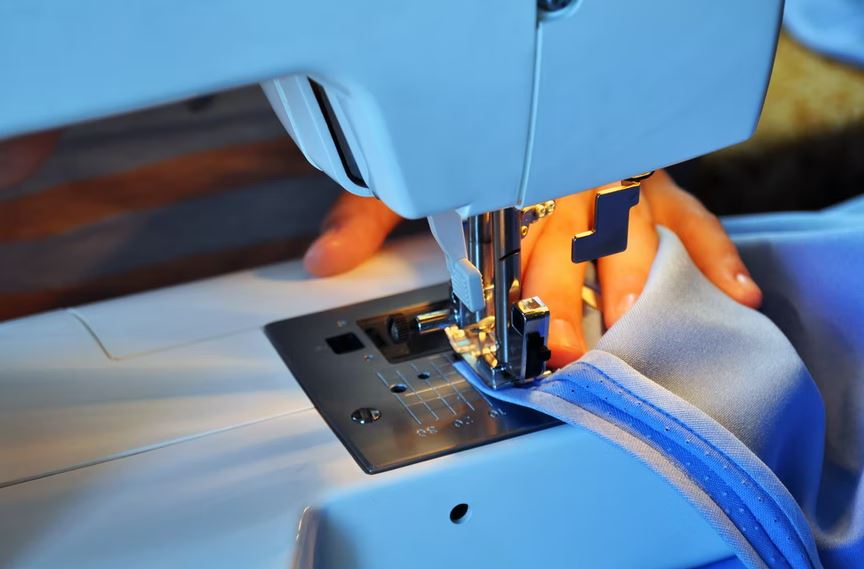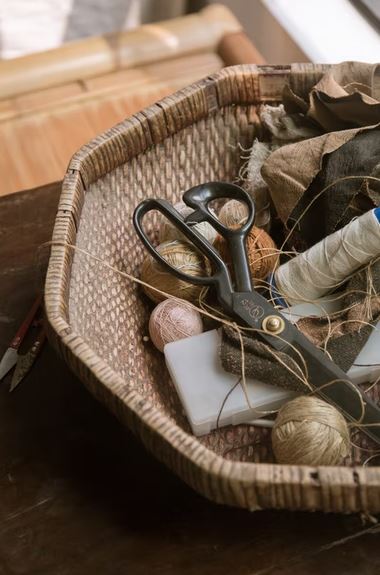Sewing is the process of attaching two pieces of fabric. It can be done by hand, machine, or a combination of both. Sewing is commonly used to make clothing and other items such as bags, shoes, and home decor. Starting a sewing business could be the ideal business opportunity for you if you enjoy sewing, creating unique clothing patterns, or performing alterations and tailoring. Dressmaking, costume design, special occasion clothing, embroidery, and clothing repair are just some of the sewing projects available, depending on your skills. Keeping up with fashion and sewing trends is the best way to attract a diverse range of customers and retain regular clients, with the hope that referrals from these customers will help you expand your customer base even further.
How To Start A Sewing Business
1. Planning your sewing business
Many small business owners overlook a business plan when they first start, but it is an essential component of success. A business plan can help you focus on your company’s mission, target market, business strategies, and, most importantly, how you plan to make money. Many banks require a business plan for companies that are just getting started if you want to get any kind of financing. So set aside some time to write a business plan.
2. Create a Business Entity
Choosing a business name is the first step in forming your company. You’ll need to choose a business structure, also known as a business entity, once you’ve decided on a name. A sole proprietorship, a limited liability company (LLC), a corporation, and other business structures are available. If you are unsure about which business structure to use, you should consult an attorney. You can also hire a formation service to take care of everything for you. Numerous smaller businesses choose a Limited company because it protects you from personal liability while also allowing you to benefit from pass-through taxation.
3. Establish your Sewing business
The items listed below will assist you in finishing your business setup:
- Open a checking account for your business.
- To begin, create a system for managing your accounting, whether it’s a software program or a spreadsheet. This will assist you in keeping track of your income and expenses.
- Make a “media kit” that contains information about your rates and services. This is something you can distribute or put on the internet.
- Set up a payroll system or a means to pay your contract workers if you plan on having employees work for you.
4. Choose your target market
You can choose to be a one-stop-shop for all things sewing and garment repair, or you can specialize in one area, such as wedding gowns.
Whatever you choose, make sure your business is set up to cater to your target market. After all, you’ll be attempting to attract this target market to your company.
5. Prepare Your Work Area
Customers will bring in garments that need to be repaired or altered to drop off and pick up. Some customers will need to try on clothing for measurements and other reasons. If you’re running a business from home, you’ll want to make sure you set up a welcoming work environment that makes customers feel at ease. Consider creating a room with an exterior door so that customers can enter your at-home office without having to walk through the rest of your house. Set up a private fitting room for trying on clothes. Maintain a professional appearance by keeping the space clean and clutter-free.
6. Begin Marketing or Contact Potential Customers
You can promote your new business in a variety of ways. Friends, family, and social media connections are all good starting points. Even if they don’t intend to use your services, they may have friends or family members who do. Distribute flyers to local dress stores, grocery stores, dry cleaners, wedding venues, and other businesses. Inquire with local print and television reporters about a feature story on a forward-thinking new business in their area. Remember to use online resources: could you list your company in online business directories and services like Google Maps? You can also use social media sites like Facebook and Twitter as outreach tools or offer special deals on sites.
Starting A Sewing Business from Home
1. Alterations or Adjustments
There has always been a demand for someone who can hem pants and take in dresses, so if you enjoy steady work, this is a fantastic choice. It does have some limitations; for example, unlike other businesses, it does not lend itself well to events such as craft fairs or even online sales. You’ll need to advertise to ensure a steady stream of customers. Consider partnering with local businesses such as bridal salons and dry cleaners, which typically provide tailoring or mending services and may be willing to send you extra customers in exchange for a commission.
2. Customize
This is the ideal home business for you if you enjoy adding a personal touch to standard or store-bought items. Because embroidery is one of the most common customization options for fabric items, it may require some special equipment, but once you’ve made that investment, the possibilities are endless. Business logos can be added to uniforms, and appliques can be added to children’s clothing. Create items in the colors of your local school or honor your favorite sports teams. Just be clear with customers about the types of customizations you offer; otherwise, customers who were hoping for alterations, as well as some fancy new embroidery, may be disappointed. The advantages of having clothing made to measure are becoming more widely recognized. Handmade clothing not only fits and looks better than ready-to-wear, but it also wears better and lasts longer because the finishing techniques are more durable and quality control is stricter.
3. Upholstery
Upholstery is an art form. Think about starting your own business or as a side hustle while working at home if you have the skills to restore worn-out chairs and sofas or add the finishing touches to handmade furniture.
4. Sewist for production
Sewist is a term merging the words, “sew” and “artist”. Try production sewing if you’re good at precise seam placement and pattern cutting. Other businesses, often handmade sewists, hire off-site sewists to help them create stock for their businesses. Typically, this entails making numerous copies of the same item, some of which aren’t even finished—another sewist will finish the job later. Work-at-home sewing jobs in production sewing are uncommon, but if you know of other handmade businesses in your area that is just getting started, you might be able to offer your assistance and earn a little extra money.


